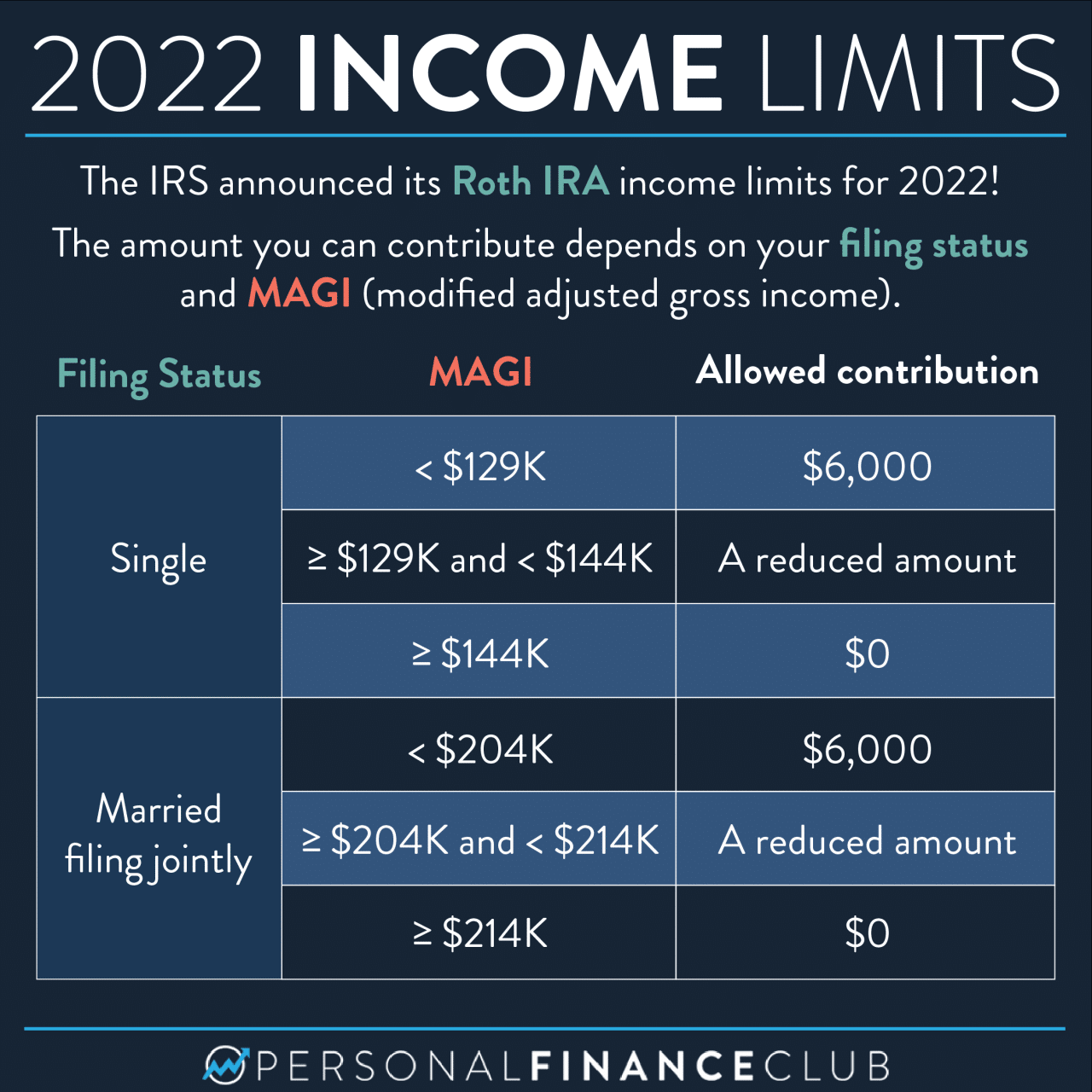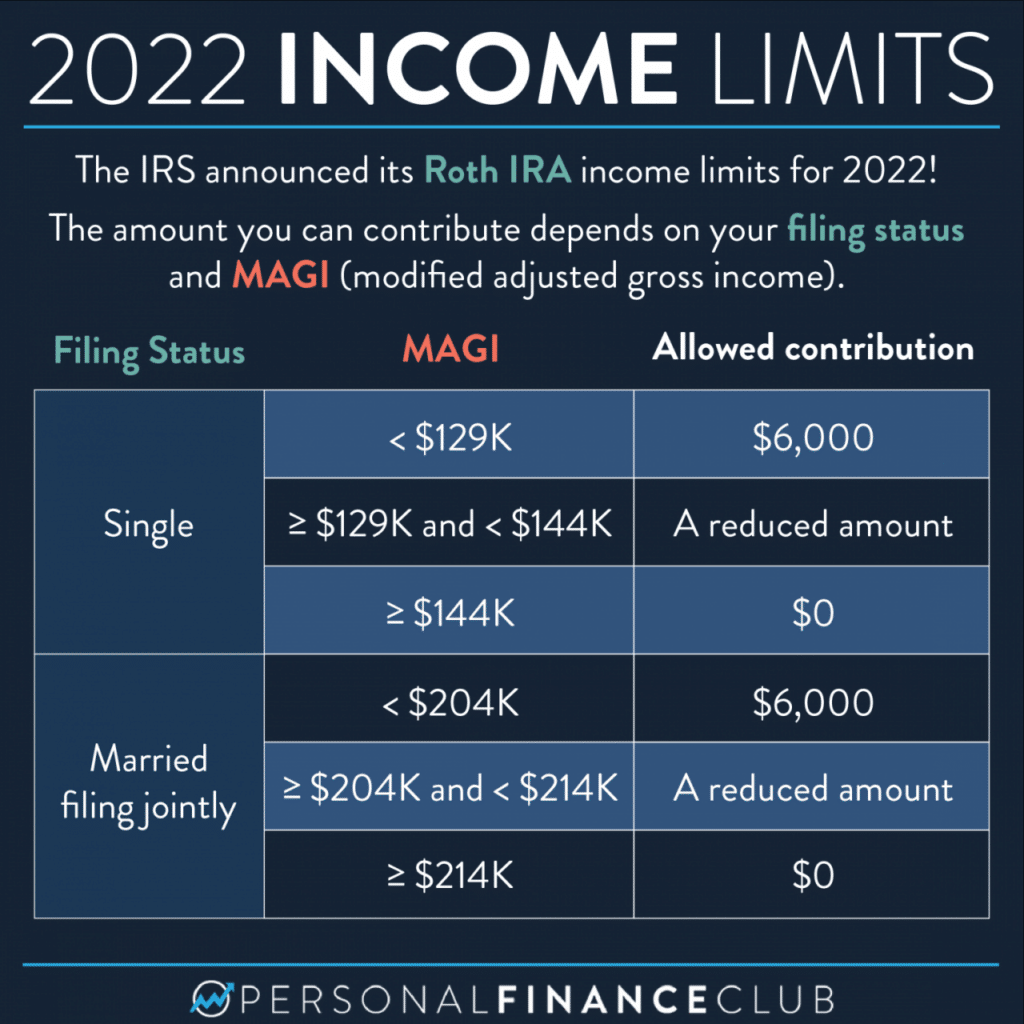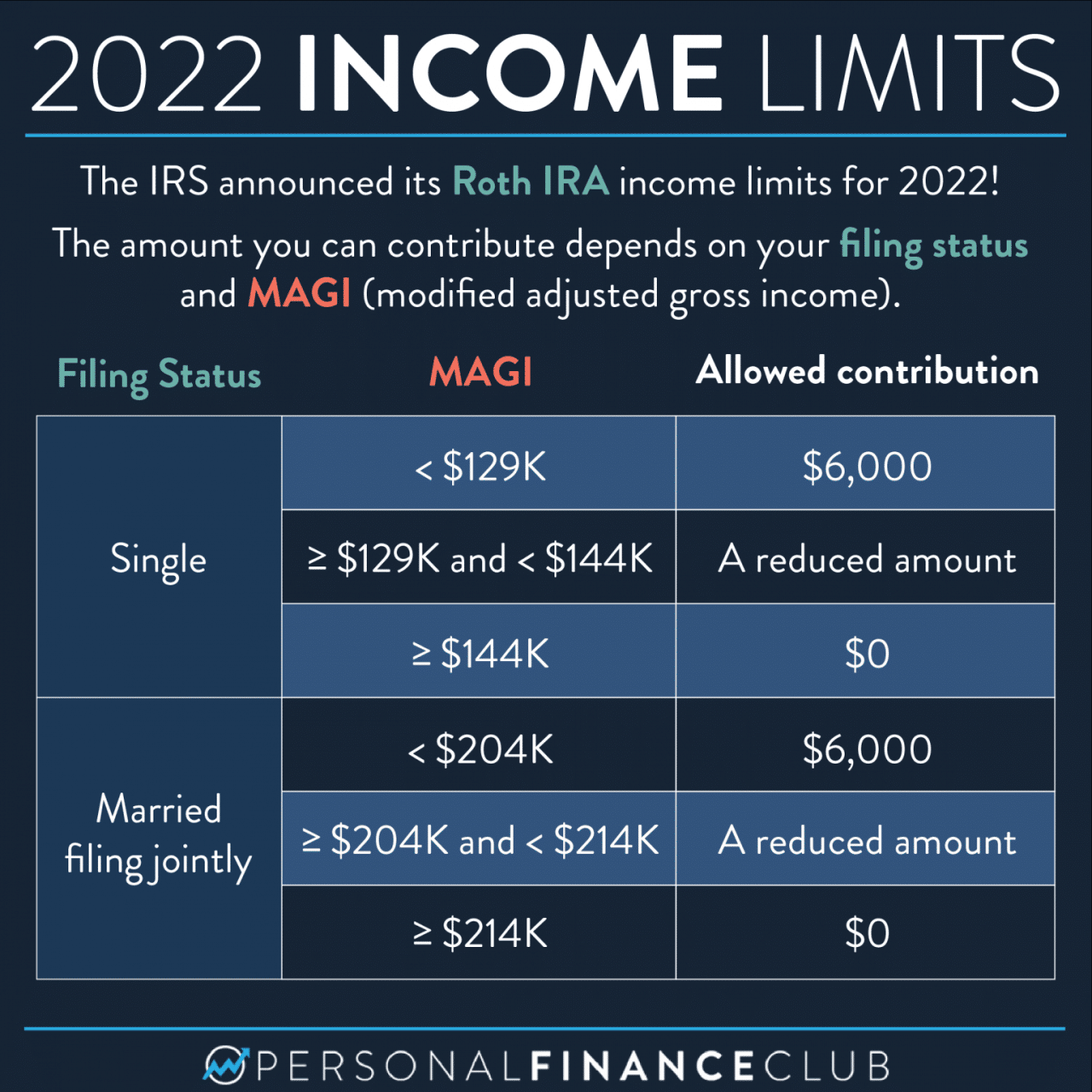Roth IRA contribution limit 2024 vs 2023: Planning for retirement involves understanding the rules and limits that govern your savings. The Roth IRA, a popular retirement savings vehicle, has a contribution limit that can fluctuate from year to year.
This year, the limit has increased, which can impact how much you can contribute and the potential tax benefits you can reap. Let’s delve into the details of the 2023 and 2024 Roth IRA contribution limits, exploring the reasons behind the changes and how they might influence your retirement planning strategies.
The Roth IRA offers a unique opportunity to save for retirement with tax-free withdrawals in the future. By contributing to a Roth IRA, you are essentially paying taxes on your contributions now, but your earnings and withdrawals will be tax-free in retirement.
This makes it an attractive option for many individuals, especially those who anticipate being in a higher tax bracket in retirement.
Roth IRA Contribution Limits
A Roth IRA is a retirement savings account that allows you to contribute after-tax dollars and potentially withdraw your earnings tax-free in retirement. Contribution limits are the maximum amount you can contribute to a Roth IRA each year. These limits are set by the IRS and are adjusted annually to account for inflation.
If you’re over 50, you can contribute more to your IRA. Learn about the IRA contribution limits for people over 50 in 2024.
Understanding the contribution limits is essential for maximizing your retirement savings and ensuring you don’t overcontribute.The contribution limit for Roth IRAs changes each year. Knowing the difference between the 2023 and 2024 limits is important to ensure you’re maximizing your contributions and avoiding penalties for overcontributions.
Contribution Limits for 2023 and 2024
The contribution limit for Roth IRAs in 2023 was $6,500. If you were 50 or older, you could contribute an additional $1,000 as a “catch-up” contribution, bringing your total contribution limit to $7,500. In 2024, the contribution limit has increased to $7,000 for those under 50, and $8,000 for those 50 and older.
Roth IRA Contribution Limit for 2023
In 2023, the maximum amount you could contribute to a Roth IRA was $6,500. If you were 50 or older, you could contribute an additional $1,000 as a catch-up contribution, bringing the total to $7,500.
Tax Advantages of Contributing to a Roth IRA in 2023
Contributing to a Roth IRA in 2023 offered several tax advantages. The primary advantage is that your contributions are made with after-tax dollars, meaning you’ve already paid taxes on the money. This allows your earnings to grow tax-free, and when you withdraw the money in retirement, it’s tax-free as well.
Here are some other tax benefits:
Tax-free withdrawals in retirement
You can withdraw your contributions and earnings from a Roth IRA tax-free in retirement, regardless of your income level.
No required minimum distributions
Unlike traditional IRAs, there are no required minimum distributions from a Roth IRA, giving you more flexibility with your retirement savings.
Didn’t file your taxes on time? It’s important to understand the penalties for not filing an extension by October 2024.
Potential for lower taxes in retirement
Need to fill out a W9 form? Here’s how to fill out a W9 form for October 2024.
If you expect to be in a higher tax bracket in retirement, contributing to a Roth IRA could be advantageous.
If you’re married filing separately, you’ll need to know the tax brackets for that filing status.
Roth IRA Contribution Limit for 2024: Roth IRA Contribution Limit 2024 Vs 2023
The Roth IRA contribution limit for 2024 remains unchanged from 2023, offering individuals a valuable opportunity to save for retirement while potentially reducing their future tax burden.
Catch-Up Contributions for Individuals Aged 50 and Over
Individuals aged 50 and over can contribute an additional amount to their Roth IRA in 2024, allowing them to catch up on their retirement savings. This catch-up contribution is separate from the regular contribution limit and can help older individuals accelerate their retirement planning.
The 401k contribution limit for 2024 might be different depending on whether you have a traditional or Roth 401k.
Tax Advantages of Contributing to a Roth IRA in 2024
Contributing to a Roth IRA in 2024 offers several tax advantages, making it an attractive retirement savings option. Roth IRA contributions are made with after-tax dollars, meaning you won’t receive a tax deduction for your contributions. However, qualified withdrawals from a Roth IRA in retirement are tax-free, providing a significant advantage over traditional IRAs, where withdrawals are taxed in retirement.
“With Roth IRAs, you pay taxes now, but you get to withdraw your money tax-free in retirement.”
The tax-free nature of Roth IRA withdrawals can be particularly beneficial for individuals who anticipate being in a higher tax bracket in retirement than they are today. By contributing to a Roth IRA, you can potentially reduce your overall tax burden in retirement and enjoy a more comfortable financial future.
Comparison of 2023 and 2024 Contribution Limits

The Roth IRA contribution limit for 2024 has increased compared to 2023. This change can impact individual retirement planning strategies, as it allows individuals to contribute more to their Roth IRA accounts in 2024.
Contribution Limits for 2023 and 2024
The table below summarizes the Roth IRA contribution limits for 2023 and 2024:
| Year | Contribution Limit |
|---|---|
| 2023 | $6,500 |
| 2024 | $7,000 |
Reasons for Changes in Contribution Limits
The increase in the Roth IRA contribution limit for 2024 is likely due to inflation and the cost of living rising. The IRS adjusts contribution limits annually to account for inflation, ensuring that the maximum contribution amount keeps pace with the rising cost of living.
Impact of Changes on Retirement Planning
The increased contribution limit for 2024 presents a potential opportunity for individuals to save more for retirement. By contributing the maximum amount allowed, individuals can build a larger nest egg, potentially leading to a more comfortable retirement.
How much can you contribute to your 401k this year? Check out the 401k contribution limit for 2024.
“The higher contribution limit for 2024 allows individuals to potentially save more for retirement, potentially leading to a larger nest egg.”
Make sure you’re aware of any mileage rate changes that might happen in October 2024.
For individuals who are already maximizing their Roth IRA contributions, the increase in the limit may not have a significant impact on their retirement planning strategies. However, for individuals who are not currently contributing the maximum amount, the increase in the limit presents an opportunity to increase their retirement savings.
High earners have a different 401k contribution limit. Learn more about the 401k contribution limits for high earners in 2024.
Factors Influencing Contribution Limits
The Roth IRA contribution limit is adjusted annually to reflect changes in the cost of living. This adjustment ensures that the contribution limit keeps pace with inflation, allowing individuals to save more for retirement without losing purchasing power.
The mileage rate is updated regularly. Find out when the mileage rate will be updated for October 2024.
Inflation
Inflation is a key factor influencing Roth IRA contribution limits. The Consumer Price Index (CPI) is used to measure inflation, and the IRS adjusts the contribution limit based on the CPI’s annual increase. This adjustment ensures that the contribution limit keeps pace with the rising cost of goods and services, allowing individuals to save more for retirement without losing purchasing power.
For example, if the CPI increases by 3%, the Roth IRA contribution limit may be adjusted upward by 3% as well.
Economic Conditions
Economic conditions can also influence Roth IRA contribution limits. During periods of economic growth, the contribution limit may be increased to encourage saving and investment. However, during economic downturns, the contribution limit may be frozen or even reduced to reflect the economic reality.
For example, during the 2008 financial crisis, the Roth IRA contribution limit remained unchanged for several years.
Other Factors
While inflation and economic conditions are the primary factors influencing Roth IRA contribution limits, other factors can also play a role. These include:
- Government policy:The government may choose to adjust the contribution limit for political or social reasons, such as to encourage retirement savings or to provide tax relief to certain groups of people.
- Demographic trends:As the population ages and life expectancies increase, the contribution limit may be adjusted to reflect the need for longer retirement savings.
- Market performance:The performance of the stock market and other investments can also influence the contribution limit, as policymakers may seek to encourage or discourage saving based on market conditions.
Implications for Retirement Planning
The changes in Roth IRA contribution limits can have a significant impact on retirement planning, especially for individuals at different stages of their savings journey. While the increased contribution limit offers a potential benefit, it’s important to consider the implications for your specific financial situation.
Need to know the mileage rate for business travel? You can find the current mileage rate for October 2024 online.
Impact on Different Retirement Stages, Roth IRA contribution limit 2024 vs 2023
The increased contribution limit can be particularly advantageous for individuals in the early stages of their retirement planning. This is because they have more time to benefit from the power of compounding. By contributing the maximum amount allowed, they can accumulate a larger nest egg over time.
Do you have rental income? Use a tax calculator to figure out your tax liability for income from rental properties in October 2024.
For instance, a young professional who starts saving early and contributes the maximum amount each year could accumulate a significantly larger retirement nest egg compared to someone who starts saving later in life.For individuals nearing retirement, the increased contribution limit may not have as much impact.
Divorced individuals may have different Roth IRA contribution limits. Check out the Roth IRA contribution limit for divorced individuals in 2024.
They have less time to benefit from compounding, and their focus may shift towards maximizing income and managing existing retirement savings. However, even for those nearing retirement, the increased contribution limit can still be beneficial. It can provide an opportunity to make additional contributions to catch up on savings or to help ensure they have enough to cover their retirement expenses.
Figuring out your tax liability for 2024? A tax calculator can give you a good estimate of how much you’ll owe.
Retirement Savings Strategy Adjustments
Individuals may need to adjust their retirement savings strategies in response to the changes in contribution limits. For example, those who have been contributing the maximum amount allowed under the previous limit may need to adjust their budget to accommodate the higher contribution limit.
Wondering about your retirement savings? The IRA contribution limits for part-time workers might be different than you expect.
Alternatively, they could consider increasing their overall contributions to take advantage of the increased limit. Another adjustment might involve re-evaluating asset allocation. Individuals who have been primarily focused on maximizing growth through investments may need to consider a more conservative approach as they approach retirement.
This could involve shifting some of their assets to more conservative investments, such as bonds, to reduce risk. Individuals who are behind on their retirement savings may need to make more significant adjustments. This could involve increasing contributions, working longer, or delaying retirement.
Ultimately, the best way to adjust your retirement savings strategy is to consult with a financial advisor. They can help you develop a plan that is tailored to your individual needs and goals.
The Seahawks fought hard, but their comeback fell short in their Week 5 loss.
Conclusion
Understanding Roth IRA contribution limits is crucial for maximizing your retirement savings. While the contribution limit for 2024 remains the same as 2023, it’s important to stay updated on any potential changes.
Contribution Limits and Retirement Planning
Staying informed about contribution limits and their potential impact on your retirement planning is essential. The contribution limit serves as a guideline for how much you can contribute to your Roth IRA each year. By knowing this limit, you can strategically allocate your savings to maximize your tax-advantaged growth potential.
Ultimate Conclusion
Staying informed about Roth IRA contribution limits is crucial for effective retirement planning. The adjustments in contribution limits can affect your overall savings strategy, especially as you approach retirement. Understanding the changes and how they might impact your individual circumstances allows you to adjust your approach accordingly.
Whether you’re just starting your retirement savings journey or nearing retirement, staying informed about these limits and their implications can help you make informed decisions about your financial future.
Query Resolution
What is the difference between a Roth IRA and a Traditional IRA?
A Roth IRA allows you to contribute after-tax dollars and withdraw your earnings tax-free in retirement. A Traditional IRA allows you to contribute pre-tax dollars and pay taxes on withdrawals in retirement. The choice between the two depends on your individual tax situation and future income expectations.
Can I contribute to both a Roth IRA and a Traditional IRA?
Yes, you can contribute to both a Roth IRA and a Traditional IRA, but there are contribution limits for each. The total amount you can contribute across both types of IRAs cannot exceed the annual limit for the year.
Is there an age limit for contributing to a Roth IRA?
There is no age limit for contributing to a Roth IRA. You can continue to contribute as long as you have earned income, regardless of your age.







